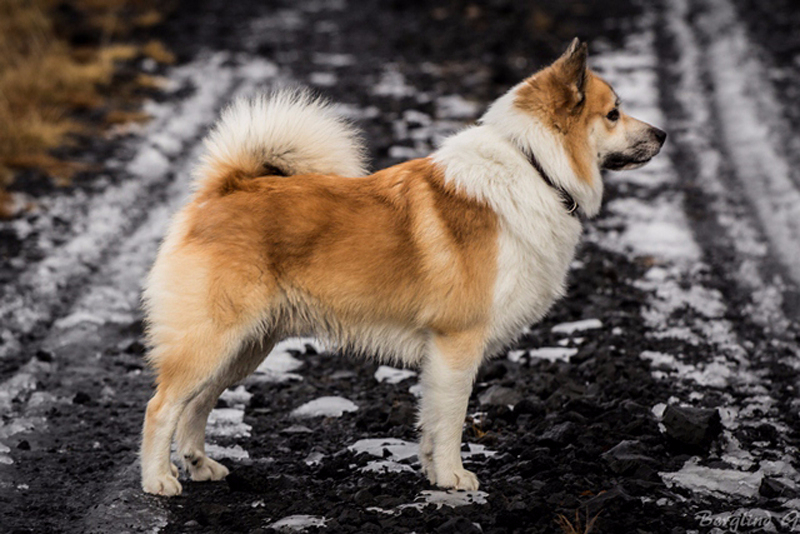The Icelandic Sheepdog (Íslenskur fjárhundur) is Iceland's only native breed of dog. It is the descendant of the dogs brought to Iceland by the original Viking settlers between 870 and 930.

The dogs became indispensable in the rounding up of livestock and in the daily work on the farms. Their method of working adapted to the local terrain, farming methods and the people's hard struggle for survival over the centuries.
The Icelandic sheepdog is a hardy dog, happy and friendly with a gentle disposition. Its love of working, eagerness to learn and cheerful bark have eased the shepherd's load and earned it it's master's trust and affection and more often than not a share of his packed lunch. It is also a very good watch dog without being aggressive.
The Icelandic Kennel Club was founded on 4th September 1969 by a group of dedicated people concerned with the preservation of the Icelandic sheepdog as a breed, at that time it was in imminent danger of extinction. The Icelandic sheepdog breed club, Deild íslenska fjárhundsins, was founded in 1979, and was given the responsibility for developing, maintaining and safeguarding the breed for the future by the Icelandic Kennel Club.
Appearance and size
The Icelandic sheepdog is a medium sized dog with pricked ears, a well curled tail, and double dew claws on it's hind legs. It's mood is expressed by it's mobile ears and intelligent and lively dark brown eyes.
The coat can vary in length, either long or short but always thick and extremely weather-resistant.
Breed registration statistics
Below you can find the registration statistics for the Icelandic Sheepdog in the Nordic countries from 1990 onwards.
| | Iceland | Denmark | Finland | Norway | Sweden |
|---|
| 2015 |
137 |
100 |
44 |
35 |
76 |
|---|
| 2010 |
94 |
122 |
65 |
63 |
123 |
|---|
| 2005 |
89 |
131 |
42 |
67 |
91 |
|---|
| 2000 |
73 |
138 |
34 |
66 |
70 |
|---|
| 1995 |
89 |
171 |
8 |
48 |
61 |
|---|
| 1990 |
43 |
103 |
1 |
39 |
46 |
|---|